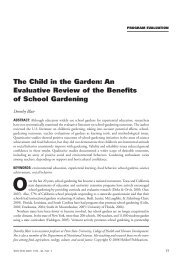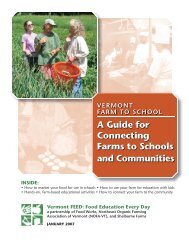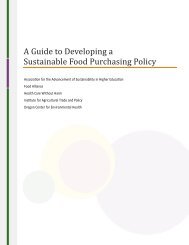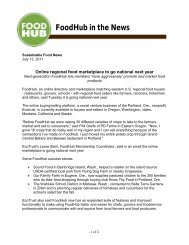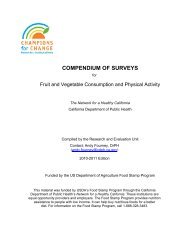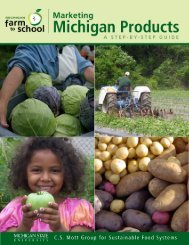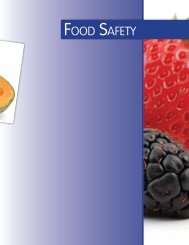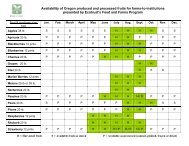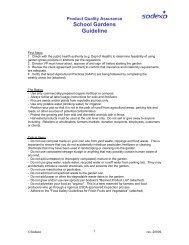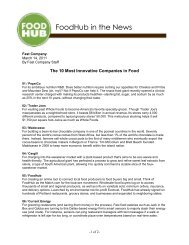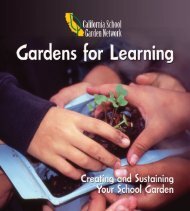eval report cover.indd - New Jersey Farm to School Network Wiki
eval report cover.indd - New Jersey Farm to School Network Wiki
eval report cover.indd - New Jersey Farm to School Network Wiki
You also want an ePaper? Increase the reach of your titles
YUMPU automatically turns print PDFs into web optimized ePapers that Google loves.
BLP-OR: BEND LA-PINE FARM TO SCHOOL PROGRAM, OREGONBend La-Pine <strong>School</strong> District, ORFree / reduced meal eligibility: 32.5%Total schools:32 + 3 Head start programsEnrollment: 14,685Demographics:76.3% White, 12.2% Hispanic(based on data available for thestate of Oregon public schools)Local product used in:Once a week product is served inthe cafeteria before lunch, alsoserved with breakfast, and in thesummer feeding program.Other program components:<strong>School</strong> gardens, greenhouse, cookingdemonstrations, and contests with foodLocal farmers made deliveries of fresh, localproduce once a week <strong>to</strong> all the schools inthe district 14 elementary, eight middle,seven high and alternative schools, three privateschools and three Head Start programs in 2005-06. The farmers harvested the product on Tuesdaysand brought it <strong>to</strong> the school nutrition serviceswarehouse on Wednesdays before headingoff <strong>to</strong> sell another portion of the harvest at thefarmers’ market. The food was then divided in<strong>to</strong>equal portions for each of the schools and transported<strong>to</strong> each school where the kitchen staffcleaned, prepared, and served it <strong>to</strong> students. Inthe spring, a variety of products such as strawberries,blueberries, green beans, cucumber,cauliflower, broccoli, melons, watermelons, cantaloupe,cassava, <strong>to</strong>ma<strong>to</strong>es, peppers, celery, andcarrots were available in a school produce box.Fruit from the farmers’ market was also used inthe “breakfast in the classroom” program in seven schools. There wasn’t much wasted fromthe produce, but if there were lef<strong>to</strong>vers, they were used in the after-school snack programthat fed 300 children/day or the supper program that fed 150 children/day. Any lef<strong>to</strong>versfrom the farmers’ market were also served in the cafeteria the next day.Th e school district found that the cost of fresh, local produce was not prohibitive. Theproduce purchase data available from the program was compiled by the food servicesdepartment.An extensive <strong>eval</strong>uation of the program was not carried out. Anecdotal informationwas very supportive of the program, in fact program organizers said that they couldincorporate more local produce if it was available from farmers in the vicinity.Joshi A, Kalb M, Beery M, Going Local: Paths <strong>to</strong> success for farm <strong>to</strong> school programs. Case study “Oregon: Getting<strong>Farm</strong> <strong>to</strong> <strong>School</strong> Programs Started”, December 2006.Conclusions <strong>Farm</strong> <strong>to</strong> <strong>School</strong> and Program RecommendationsProfileswww.farm<strong>to</strong>school.org 63



